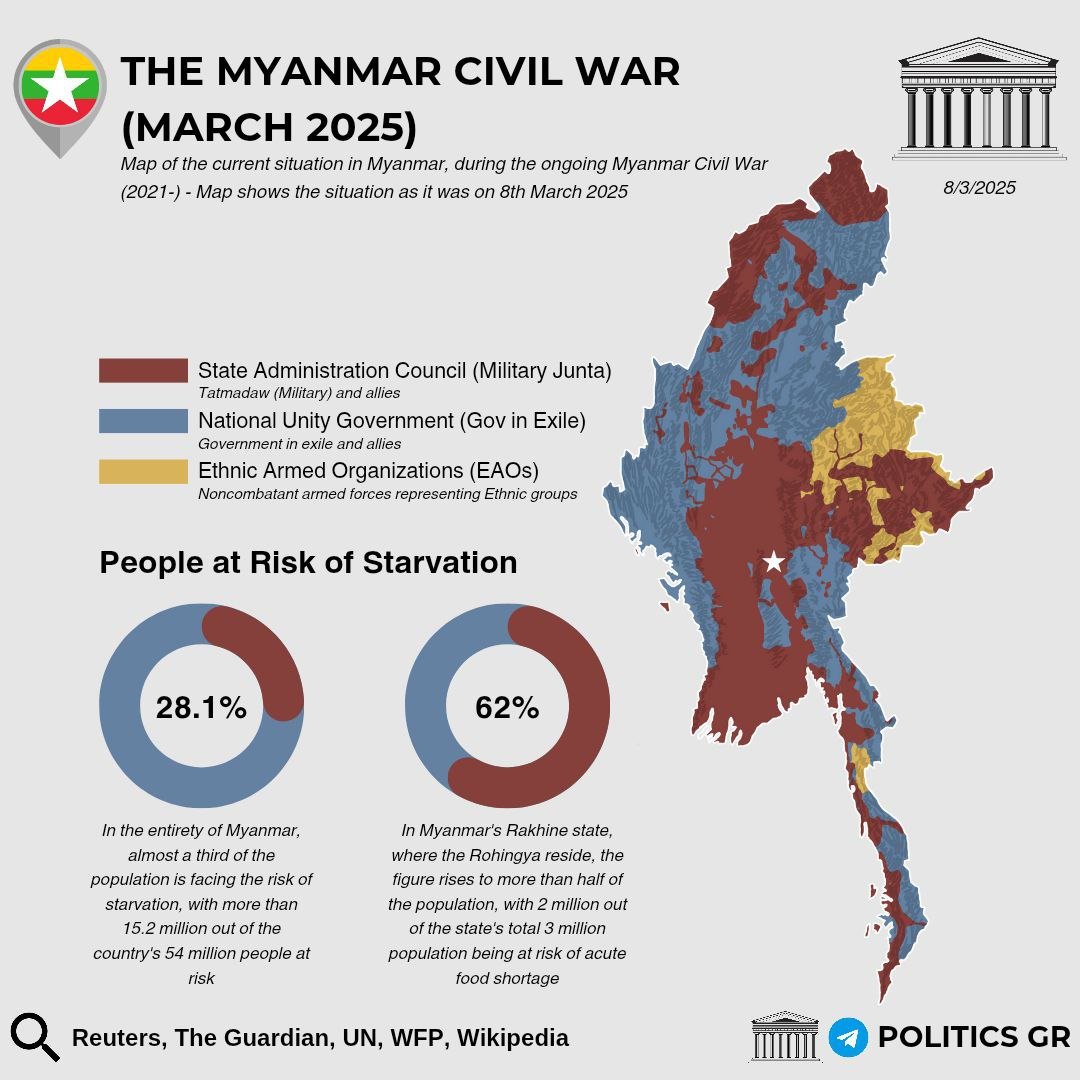Violence in Myanmar Continues—Or Maybe It Never Really Stopped
Executive Summary
Despite announcements of a ceasefire following Myanmar’s devastating March 28 earthquake, the country’s military junta has continued its relentless assault on civilians. UN officials and humanitarian groups report hundreds of airstrikes and attacks since the ceasefire began, compounding the misery of a population already reeling from civil war and natural disaster. Junta leader Min Aung Hlaing appears to be using the humanitarian crisis as an opportunity to gain regional legitimacy and revive rigged electoral plans, even as millions remain displaced, aid is restricted, and airstrikes persist across the country.
Analysis
Myanmar is facing simultaneous catastrophes: the devastation wrought by the March 28 earthquake and the continuation of a brutal civil conflict that began with the military coup in 2021. Although the military junta and the opposition National Unity Government (NUG) both announced unilateral ceasefires in early April, data and eyewitness reports confirm that the junta has intensified its campaign of airstrikes and artillery attacks. According to the UN and ACLED, over 240 military attacks—including 171 airstrikes—have occurred since the earthquake, killing more than 200 civilians, with many of these strikes targeting earthquake-affected regions.
UN High Commissioner for Human Rights Volker Türk condemned the violence, calling it a flagrant violation of international humanitarian law. He urged the military to cease hostilities and allow humanitarian aid to reach the estimated 6.3 million people now in urgent need. His appeal comes amid worsening conditions: monsoons, rising disease risk, and food and medical shortages are threatening lives across the country.
China, meanwhile, has deployed observers to monitor a localized ceasefire in Lashio, highlighting Beijing’s growing role as a mediator and stabilizer along its border. This development underscores the international community’s fragmented response, with regional powers stepping in as global institutions struggle to enforce humanitarian norms.
For junta leader Min Aung Hlaing, the earthquake provided not just a disaster but a strategic opportunity. He has leveraged the crisis to reopen diplomatic channels long closed by his regime’s pariah status. His meetings with leaders from Malaysia, India, and even Belarus are seen by critics as attempts to secure legitimacy for sham elections planned for later this year. The elections—promised since the coup—are widely expected to be neither free nor fair, with most opposition leaders jailed or exiled and the military rewriting electoral rules to favor its grip on power.
Despite these developments, the junta’s military strategy remains unchanged. In April alone, aerial attacks reportedly increased, with an average of nearly 10 attacks per day since the ceasefire began. Civilians have been bombed during New Year celebrations and targeted in villages across Karen, Shan, and Rakhine states. The junta’s justification? Retaliation against resistance group activity, even when that “activity” includes nonviolent resistance or community organizing.
Humanitarian agencies face enormous challenges in responding. The UN reports that only 12% of the $275 million emergency aid plan has been funded. With nearly 20 million people in need and disease risks rising—especially in quake-affected regions—aid groups warn that delays in funding and access are costing lives.
Critics argue that current diplomatic engagement, including by ASEAN and neighboring countries, risks legitimizing a regime that has shown little regard for civilian life. With no signs of a genuine ceasefire or willingness to negotiate with opposition groups like the NUG, many fear that the junta is simply biding time to further entrench its authoritarian rule under the guise of disaster recovery and staged elections.


